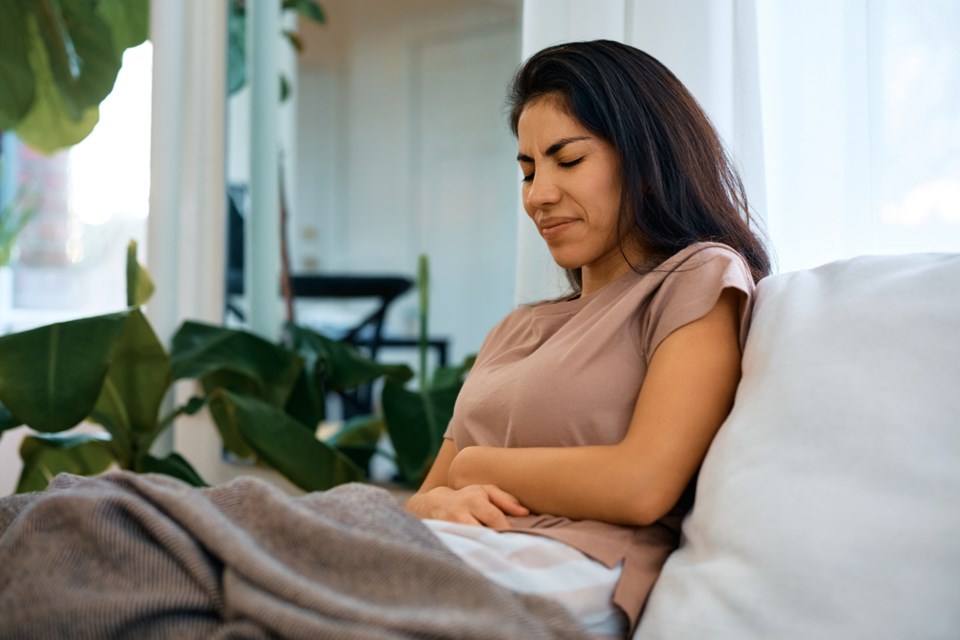Endometriosis is a condition where tissue similar to the endometrium (lining of the uterus) grows outside the uterus. These growths, called implants or lesions, can occur in various areas of the body, typically in the pelvic region, including the ovaries, fallopian tubes, and behind the uterus and can affect fertility.
The condition affects people in Canada alone. That said, while relatively widespread, so too is the potential for misinformation regarding causes, symptoms and treatment.
, one of Canada’s leading IVF and prenatal diagnosis centres, has compiled a list of common myths concerning endometriosis to help clarify any misconceptions and provide crucial context.
Myth #1: Endometriosis is rare
Endometriosis affects approximately one in 15 women of reproductive age (usually between the ages of 15-49) in Canada making it one of the most common gynecologic disorders.
Myth #2: Endometriosis pain is just like bad period pain
While some women assume their symptoms are normal menstrual cramps, endometriosis pain is usually more severe. The reason endometriosis can be so painful is because the tissue growing outside the uterus responds to hormonal signals, thickens and bleeds during the menstrual cycle, leading to pain, inflammation and difficulty getting pregnant.
Myth #3: It's easy to get diagnosed with endometriosis
Symptoms may be dismissed as "just bad periods.” Additional factors that can delay diagnosis are that pain may be inconsistent, and symptoms may mimic other conditions, like diarrhea and constipation, fatigue or bloating. Endometriosis pain can also be hard to define because it takes many forms, including pain during sex, pain during urination, pain with bowel movements and lower back pain.
Because endometriosis is so misunderstood, diagnosis can be delayed from seven to 11 years. It is important to be an advocate for yourself and proactively discuss your symptoms with your health-care provider.
Myth #4: Endometriosis is always the cause of menstrual pain
Pain related to menstrual cycles can also be due to fibroids, scarring, adenomyosis, infection, and other causes besides endometriosis.
Myth #5: Endometriosis does not occur in young women
Endometriosis can occur as early as the first menstrual cycle. If pain related to your period impacts your daily living, lasts beyond two days or is not resolved by over-the-counter pain medications you should consult your doctor.
Myth #6: Endometriosis aways causes pain
While painful periods are a common symptom, not everyone with endometriosis experiences pain. Many women only discover they have the condition while investigating fertility issues. Further, endometriosis is not just associated with menstrual pain – it can also be associated with painful intercourse.
Myth #7: Endometriosis makes you infertile
The scarring, inflammation and damage to egg health associated with endometriosis can affect fertility. However, endometriosis itself does not always inherently cause infertility. Approximately one-third of women with endometriosis experience issues with fertility.
Endometriosis is common in unexplained infertility, with approximately 50% of women experiencing unexplained infertility having undiagnosed endometriosis. However, many women with the condition can still conceive naturally. Surgical intervention or assisted reproductive techniques like IVF may be recommended for those with more severe conditions.
#8 Myth: Endometriosis can be diagnosed in a doctor’s office
Although your doctor may evaluate your symptoms by asking about your history, conducting a physical exam, or ordering an ultrasound, the only definitive method for diagnosing endometriosis is with a laparoscopy.
This is a minor surgery during which a woman is put to sleep (in the hospital) and a camera is inserted through her belly button to look inside at the uterus, tubes, ovaries, bowel and bladder. Scar tissue, unusual anatomy and endometriosis can be diagnosed, and potentially treated, by this procedure. In British Columbia a laparoscopy procedure is MSP-funded.
#9 Myth: The only treatment for endometriosis is surgery
Depending on the goal of treatment – whether it’s pain or fertility – various treatment options are available.
These include:
Nonsteroidal anti-inflammatory drugs (NSAIDS)
These medications can help alleviate the menstrual cramps that are common with endometriosis.
Gonadotropin-releasing hormone (GnRH) antagonists
These treatments block GnRH receptors in the pituitary gland at the base of the brain, causing the body to produce less estrogen, which can help relieve endometriosis pain.
Hormonal birth control (using oral contraceptive pills or other hormone treatments)
Birth control medications may be used to help shorten or stop menstruation and help symptoms. For example, a hormone-releasing IUD (e.g. Mirena) can suppress endometriosis, slow or stop menstruation and improve pain symptoms.
Surgical management surgery
This more invasive approach may be used to remove obvious implants or adhesions. The procedure can help with both pain and can also help with fertility.
Same-day virtual referral option
Olive Fertility offers patients the option to book a same-day, no-fee, virtual referral appointment at . The referral will be automatically sent to Olive Fertility where a member of its intake team will contact you shortly thereafter to schedule your fertility appointment.



